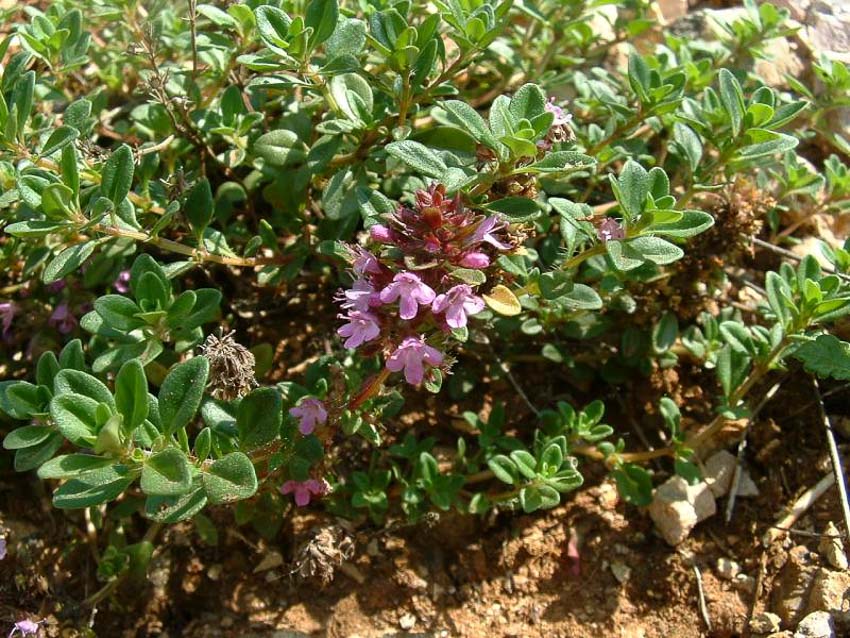Top Choices, Planting Tips, and FAQs
Make life easier by switching to ground covers in the hard-to-maintain areas of your yard. Ground covers are attractive plants that require less water and maintenance than grass lawns, and because they add color and texture to your landscape, they enhance your home’s curb appeal. Our comprehensive guide will explore all you need to know about the best ground cover for sun.
What is Ground Cover?
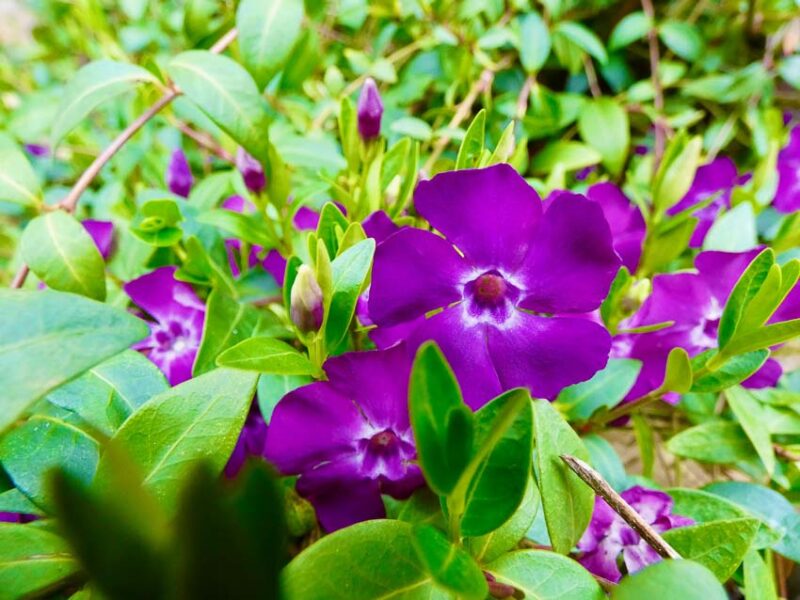
Ground cover is any type of low-growing vegetation that provides year-round cover. You can use them in place of traditional lawns, and they are effective at blocking out weeds and protecting soil from erosion.
Moreover, they add variety and visual interest to your yard and work well under shade trees, on hillsides, and in areas with poor soil.
The Role of Ground Cover in Landscaping
Ground covers play an important role in landscaping. They add color and texture and are useful in areas where it’s hard to grow grass and maintain a lawn, such as on a slope or in the shade.
Additionally, they’re good for filling large gaps in your landscaping.
Advantages of Using Ground Cover
Ground covers are easier to maintain than lawns and use less water.
Many ground covers will grow in any type of soil. Also, they can improve the quality of your soil by keeping the topsoil in place, adding organic matter, and preventing erosion.
Several types of ground covers are drought-tolerant and heat-resistant, so they will cost much less than growing a lawn in areas with restricted water usage.
A large planting of ground cover will help prevent weeds because the plants spread, blocking weed growth and making it easier to control the weeds in your yard.
Grass lawns are monocultures, and nature loves variety and diversity. With ground covers, you create a biodiverse environment in your yard that attracts wildlife by providing food and shelter for birds, insects, amphibians, and other small animals.
Different Types of Ground Cover
There are many types of ground covers to choose from, and no matter what growing conditions you have in your yard, it’s easy to find one that suits your needs. Even though many types of ground covers grow better in full sun, it’s easy to find ground covers for shade.
You can use many species of woody and herbaceous plants to provide good ground cover for sun and shade in your yard.
Best Ground Cover for Sun
When you’re looking for the best ground cover for sun, you can choose from a wide variety of perennials, annuals, and shrubs.
Top Full-Sun Ground Cover Options
Lamb’s Ear
Stachys byzantine
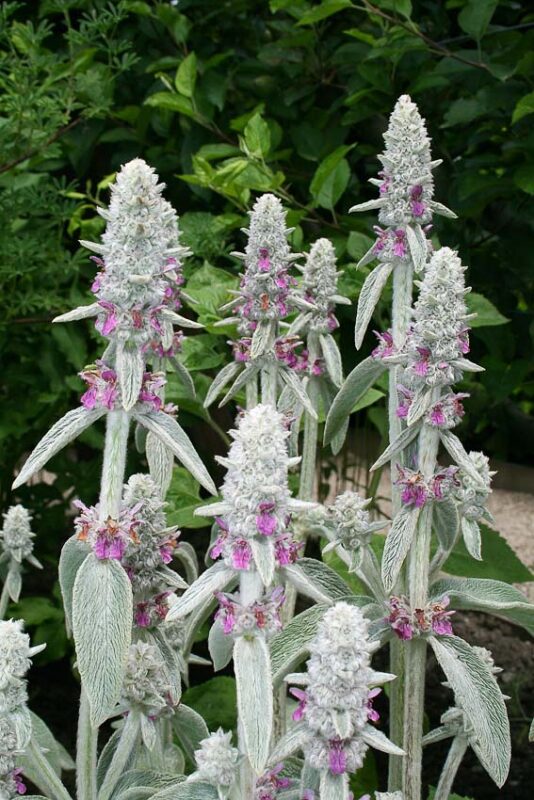
Lamb’s ear is a popular full-sun ground cover with fuzzy, silvery-gray foliage.
It’s often used because it grows in various soil types and conditions. It grows low to the ground, except for the flower stalks, which are usually pruned back.
Lamb’s ear tolerates drought, spreads easily, and thrives in well-drained soils. It will grow as an evergreen in warm climates, but even in cold climates, it is one of the first plants to leaf out in the spring.
Creeping Juniper
Juniperus horizontalis
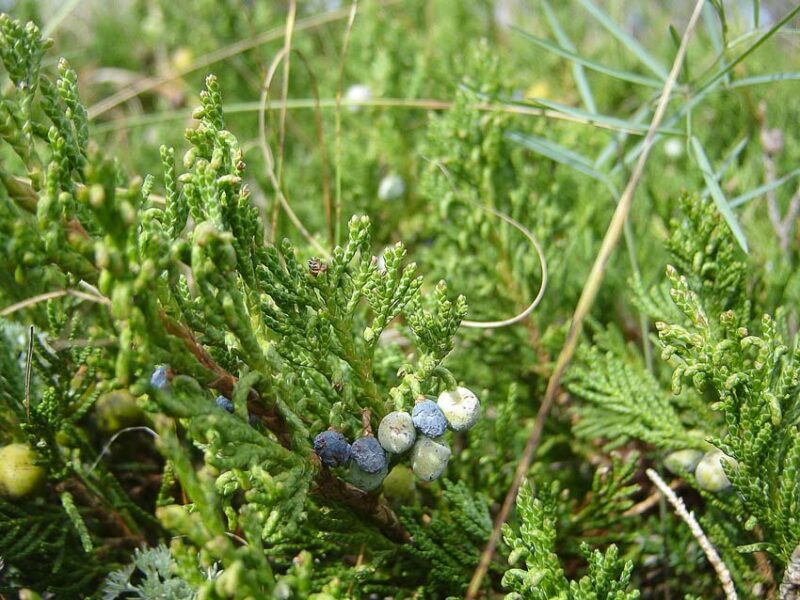
One of the best choices for full sun is this low-growing evergreen shrub. It creates a carpet of hardy blue-green foliage and is well-suited for hillsides, highway medians, and parking lot planters because it provides excellent soil stabilization.
It is an exceptionally cold-hardy choice, but it isn’t the best choice for areas with heavy foot traffic.
Creeping Thyme
Thymus serpyllum
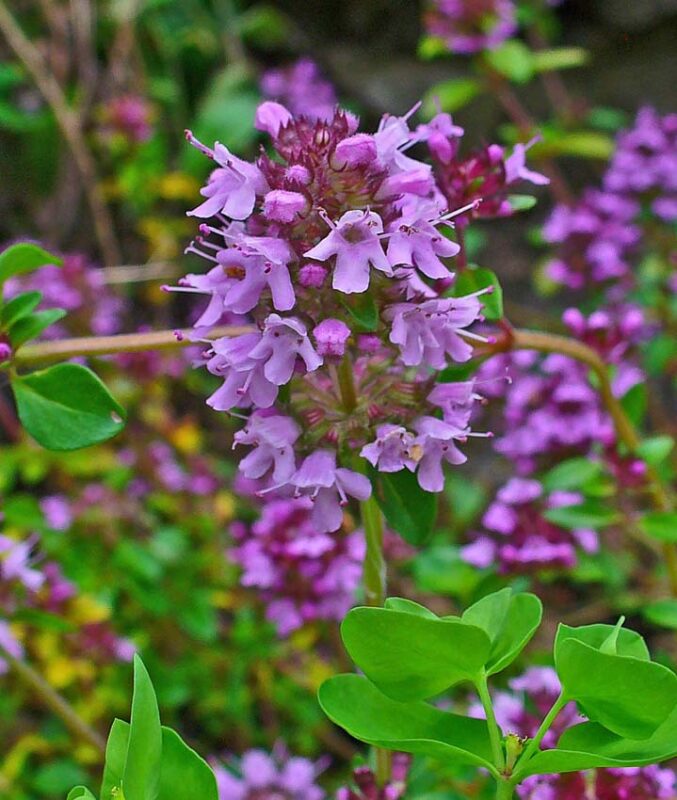
Creeping thyme may be the best ground cover for full sun. It spreads low to the ground in thick mats.
It’s perfect for hot, sunny locations, and it has small, fragrant foliage that smells like thyme when crushed. It will tolerate moderate foot traffic and is often used as filler between pavers and flagstones.
Some people grow creeping thyme as a lawn alternative, but it’s equally charming in containers, borders, and edgings.
Ice Plant
Delosperma cooperi
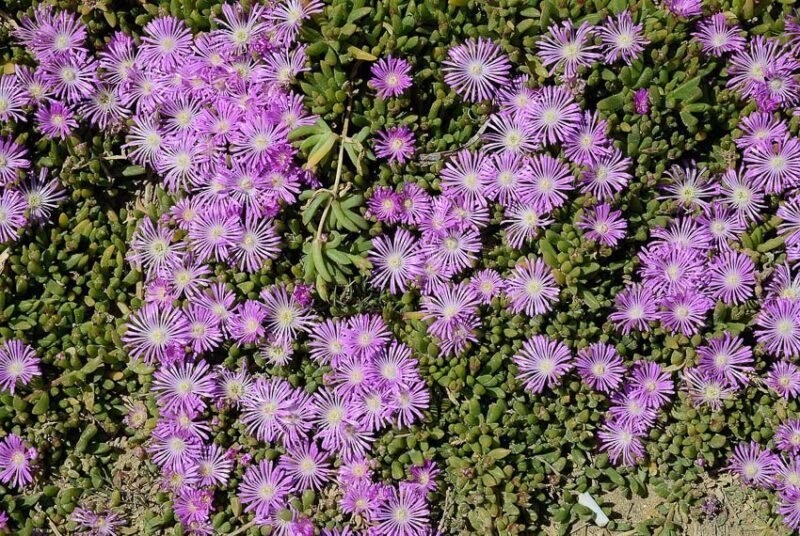
Ice plant has succulent foliage with bright, showy flowers that bloom in the summer. It is an excellent choice for xeriscaping, erosion control, and adding texture and color to a garden.
Several hybrid cultivars of Delosperma are prized for their cold hardiness.
Angelina Sedum
Sedum rupestre
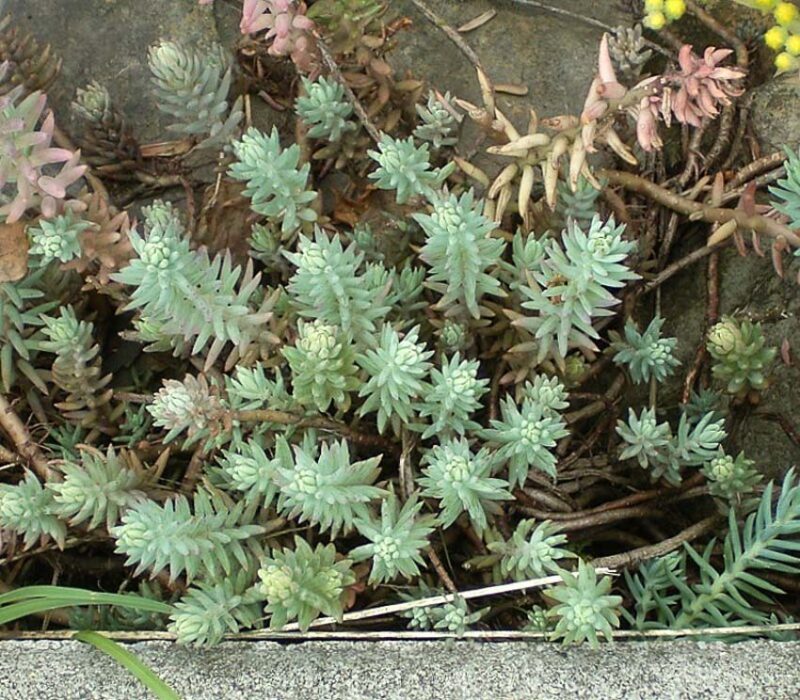
There are over 400 varieties of sedum, but Angelina sedum is one of the most popular ground covers. Angelina sedum also goes by the name Stonecrop and is one of the top choices if you want a plant you can neglect.
All sedums are drought-tolerant and low-maintenance, with thick, succulent foliage and showy flowers that bloom in the summer. Sedum is an excellent choice for erosion control and adding texture and color to a garden.
Top Partial-Sun Ground Cover Options
Try one of these if you need a ground cover for part sun.
Coral Bells
Heuchera ‘Amber Waves’
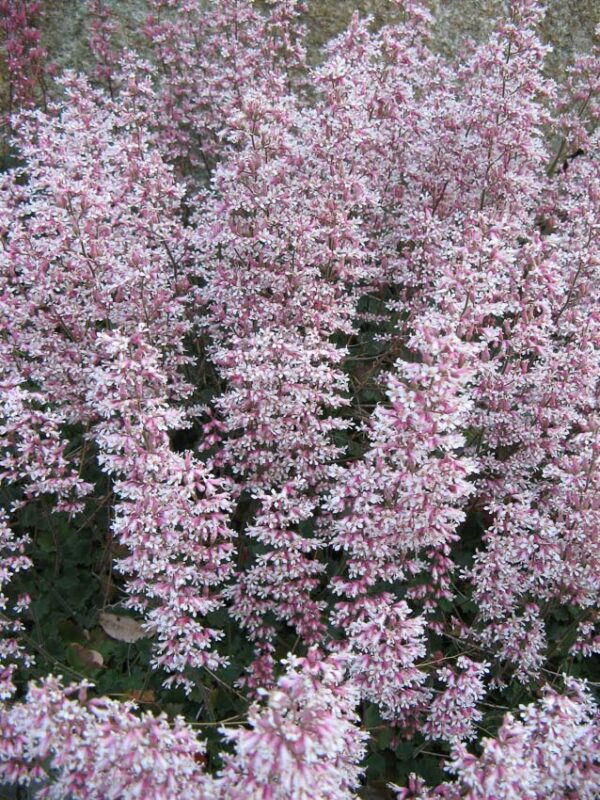
People love Coral Bells for their colorful leaves. The foliage is evergreen, and the flowers bloom on stalks that rise about 12 inches above the clumping mounds of leaves.
Coral bells perform best in partial sun and shade. They do best with a winter mulch that prevents frost heaving, and you can divide them every three to four years to keep plantings healthy.
Chamomile
Chamaemelum nobile
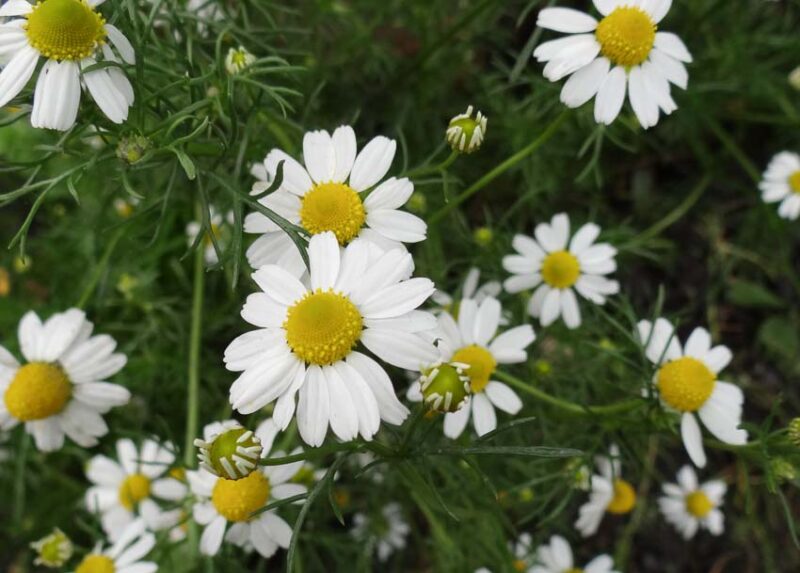
Chamomile grows less than 8 inches tall and is an excellent ground cover for attracting beneficial pollinators. This aromatic herb is resistant to pests and forms a thick mat that blooms profusely from summer to fall with small daisy-like flowers.
Chamomile is a hardy, heat-tolerant, and drought-tolerant plant, ideal as a ground cover or bedding plant.
Vinca
Vinca minor
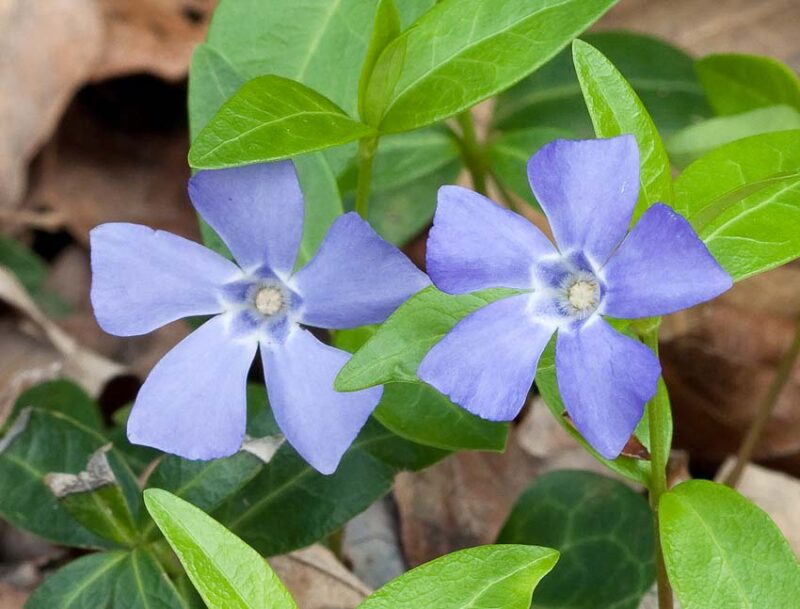
Alternatively named periwinkle, landscapers and homeowners often cultivate vinca as a ground cover with glossy green leaves and cheerful blue flowers.
It prefers partial sun and well-drained soil. Vinca is a top choice among those who need deer and rabbit-resistant ground cover, and it performs well in poor soils.
Vinca grows well on slopes and under trees and shrubs. Mow vinca in the spring with a weed trimmer to keep it from spreading.
Creeping Phlox
Phlox subulata
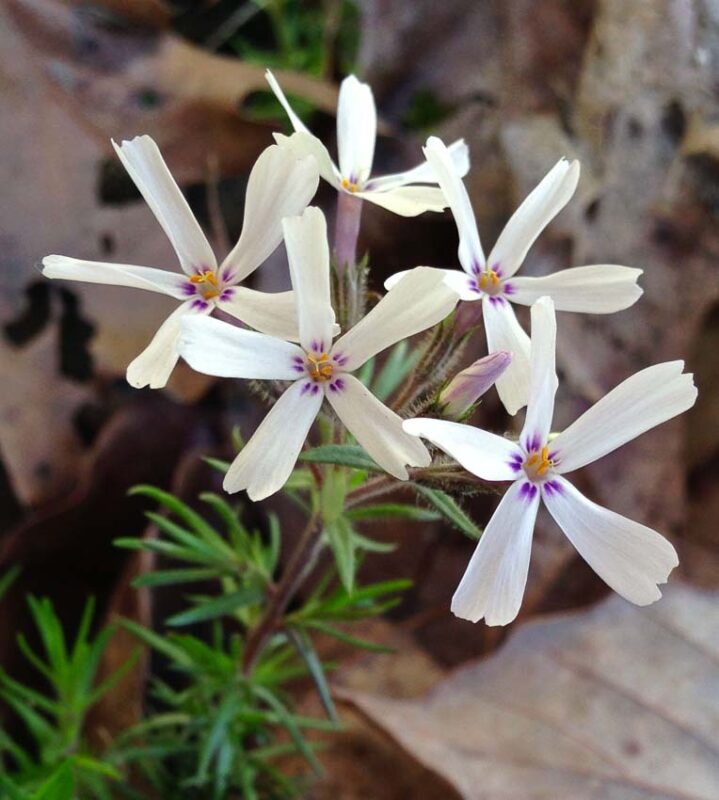
Creeping phlox, or moss phlox, is one of the most popular sun-loving ground covers. It blooms profusely for three to four weeks in the spring and comes in various shades of purple and white.
It forms thick mats and only gets about 4-6 inches tall. It’s also an ideal choice for borders and rock gardens, and it grows well in dry, sandy soils.
Creeping Cotoneaster
Cotoneaster adpressus
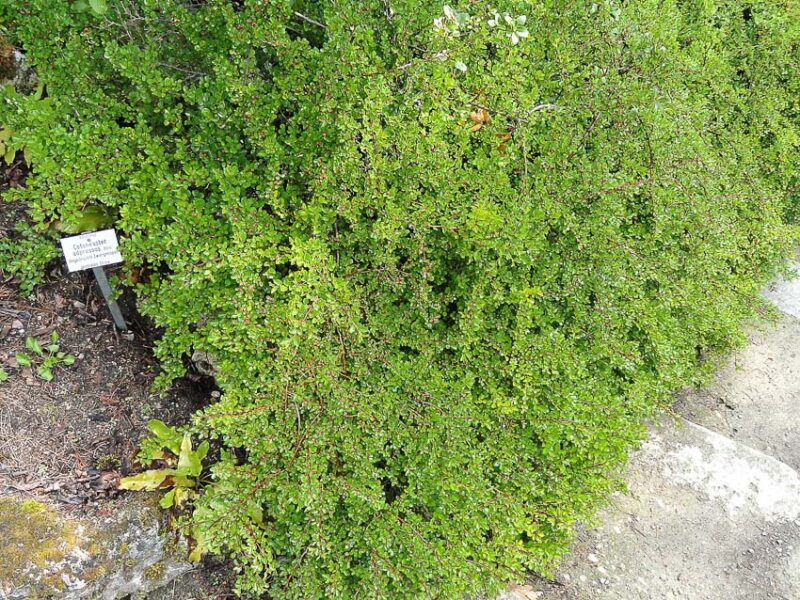
If you’re looking for a shrub for partial shade, cotoneaster is an excellent choice. It has deep roots for soil stabilization, so it’s ideal for hillsides and slopes.
It’s an attractive shrub with glossy, green leaves that turn color in the fall.
Cotoneaster will drape over rocks and retaining walls, and the bright red berries will stay on through the winter, so people often use it for visual interest in a winter garden.
Ground Cover Characteristics to Consider
Every yard is different, and only you can decide what the best ground cover for your yard will be. Therefore, you should consider the following characteristics of ground covers when you’re making your decision:
Growth rate and invasiveness–How fast your ground cover spreads will determine how closely they need to be planted. Varieties that spread quickly can also be invasive species.
Maintenance–Many types of ground covers require very little maintenance, whereas others require a bit of pruning to keep them looking their best.
Soil–Most ground covers tolerate a wide range of soil types, but it’s important to test the pH of your soil and choose a ground cover that will do well in your location. Also, note whether your soil is rich in organic matter, well-drained, or heavily compacted.
Resistance to wildlife–Consider ground covers that are resistant to wildlife if you live in an area with deer or rabbits. Creeping thyme will repel many animals, but the flowers attract beneficial pollinators like honeybees and butterflies.
Foot traffic–Some types of ground cover tolerate moderate foot traffic. For example, creeping Jenny is a walkable ground cover that grows well in full sun to partial shade.
Heat and drought tolerance–If water usage is a concern, consider drought-tolerant ground covers like cotoneaster and creeping phlox. Also, the amount of heat that different ground covers tolerate varies.
Shade tolerance–If you have an area with partial light and some shade, choose a ground cover for sun and shade, like Asian star jasmine.
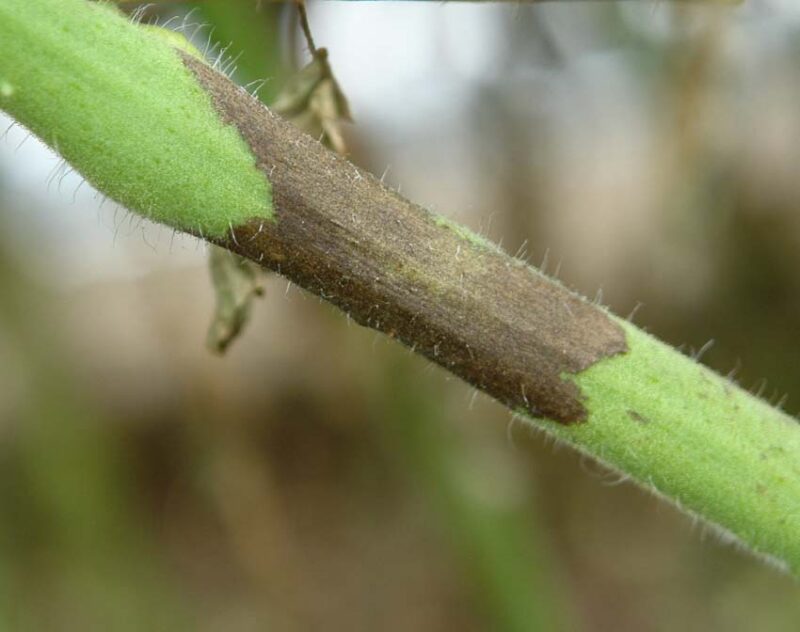
Disease resistance–Some types of ground covers are susceptible to diseases like stem blight, especially in wet areas. If that describes your yard, you might want to avoid pachysandra and periwinkle.
Flowers–Many types of ground covers produce flowers. While some have inconspicuous flowers, others are showy and long-lasting. For instance, chamomile, creeping phlox, creeping thyme, and bugleweed all have striking flowers.
Foliage–If you’re looking for interesting and colorful foliage, then choose succulents like blooming sedums or evergreen ground covers such as juniper and English ivy. Likewise, several cultivars of bugleweed will tolerate shade, however, they will develop their best color in full sun.
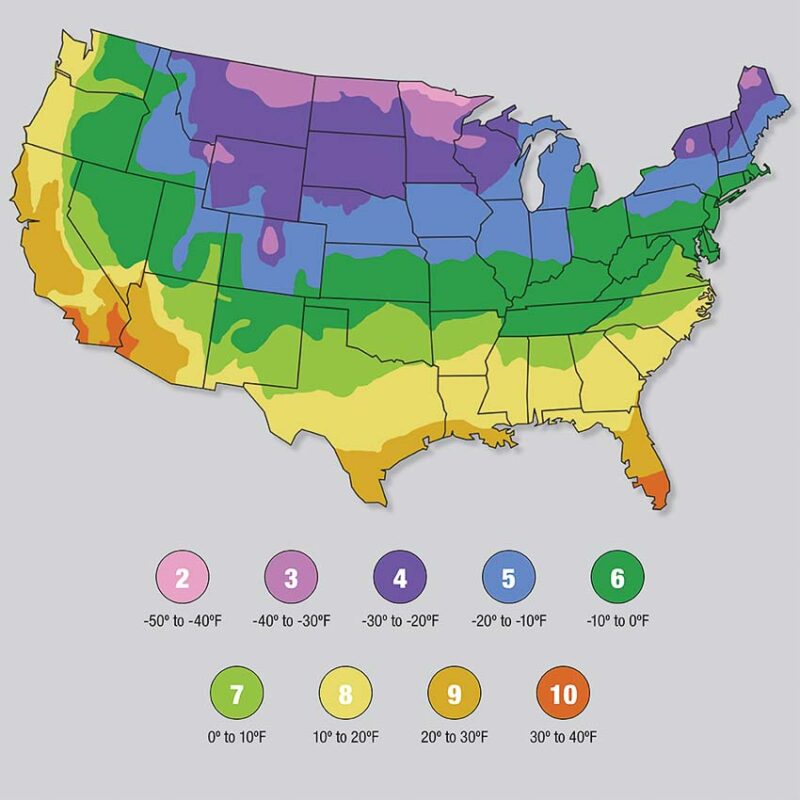
Hardiness–Check all plants for hardiness before selecting the best ground cover for your yard. You can grow ground covers like candytuft as a perennial in many areas, but if you live in a cool region, it might not be hardy in your zone. If you don’t know what your hardiness zone is, then you should consult the USDA’s hardiness zone map .
Ground Cover for Full and Partial Sun
Importantly, you should consider the amount of sunlight available when choosing the best ground cover for your yard. Learn how to define the sun exposure level there, then choose the right ground cover for your conditions.
Understanding Sun Exposure for Ground Cover
To choose the best ground cover for your yard, it’s important to understand how much sunlight your yard gets.
Sun exposure changes throughout the growing season as the position of the sun on the horizon moves up and down. But you can start by thinking about your yard in terms of the cardinal direction. Is your yard north-, south-, east-, or west-facing?
- North–Gets the least amount of sun.
- South–Gets the most amount of sun.
- East–Gets the most morning sun.
- West–Gets the most afternoon sun.
Buildings and trees obstruct the sun and keep it from getting to the ground. They can affect how much sun hits the ground in your yard.
The best way to determine the amount of sun exposure is to create a sun map.
Choose a sunny day, and set the alarm on your phone to go off every hour from 8 am to 8 pm. Each hour, take a photo of your yard. If you have a large yard, divide it into separate zones and make a sun map for each zone. At the end of the day, you can calculate how many hours of direct sunlight are in each zone and label them.
Use the following labels to describe each zone:
| Hours of Direct Sunlight | Sun Map Label |
| 3 hours or less of direct sunlight | Full shade |
| Only spotted sunlight throughout the day | Dappled sun and shade |
| 3 to 6 hours of direct sunlight, mostly in the morning | Partial shade |
| 3 to 6 hours of direct sunlight, mostly in the afternoon | Partial sun |
| 6 hours or more of direct sunlight | Full sun |
How to Choose the Right Ground Cover for Your Sun Conditions
Sun-loving ground covers need at least six hours of direct sunlight per day to thrive while shade-loving ground covers require less than four hours of direct sunlight per day. There are also many types of ground covers that thrive in partial shade, partial sun, and dappled sunlight.
Before you decide which ground cover to plant, learn more about it to determine if it’s right for your yard. Plants usually have labels with their sunlight preferences, or you can use the National Gardening Association’s online plant database , which contains standardized information on thousands of plants.
Tips for Planting and Caring for Sun-Loving Ground Covers
Sun-loving ground covers are some of the easiest plants to grow. Ground covers are naturally good at blocking out weeds, but you can give them a head start by tilling and removing weeds before you plant.
Use these additional tips to ensure success so you can enjoy a beautiful, low-maintenance yard:
- Use landscape edging to create a barrier between your lawn and your ground covers, especially with species that spread quickly by rhizomes.
- Grow plants that are well-suited to your hardiness zone.
- Plant succulents in hot, dry regions for long-lasting color and interesting foliage.
- Try making a path with flagstones or pavers if there is foot traffic going through your ground cover planting.
- Use deep-rooted woody plants and shrubs for the best soil stabilization.
- It’s easy to overwater groundcovers, especially if they are in the shade, so point sprinklers away from them when you are watering nearby lawns.
Create a Stunning and Low-Maintenance Landscape with Ground Cover for Sun
Using ground covers is an excellent way to reduce maintenance costs and create visual interest in your yard.
They make it easy to revitalize bare spots and add color while creating diverse habitats for beneficial pollinators and other wildlife. With so many wonderful varieties of ground cover for full sun to choose from, it’s easy to create a stunning and low-maintenance landscape.
Frequently Asked Questions about Ground Cover for Sun
How can I prepare my soil for planting ground cover?
Prepare your soil for planting ground cover by tilling the area to a depth of about six inches. Remove weeds, rake lightly, and add a small handful of fertilizer when you plant them.
To avoid erosion and keep the soil stabilized, don’t till hillsides or slopes before planting ground cover. Instead, dig a small hole for each plant and use landscape fabric and bark to cover the rest of the area.
How do I control weeds in my ground cover?
The chemicals you use for broadleaf lawn weeds will kill your ground cover, so you might need to do a little hand-pulling before they get fully established. Most ground covers will grow thick enough to block out weeds, but be sure to use the recommended spacing when you plant so that it fills in quickly.
Can I mix different types of ground cover in the same area?
It’s not a good idea to mix different types of ground cover in the same area. You can plant them adjacent to each other, but you should use lawn edging or another type of barrier to keep ground covers inside their designated area.
How fast do sun-loving ground covers grow?
There are many varieties of sun-loving ground covers, and they don’t all grow at the same rate. One of the fastest-growing ground covers for full sun is candytuft. It grows quickly, but it’s not invasive.
You can also try creeping phlox or ice plant for a sun-loving ground cover that fills in quickly.
Are there any ground covers resistant to pests and diseases?
Many types of ground covers are resistant to pests and diseases.
Ground covers are usually hardy plants, and there are several varieties that are also resistant to wildlife, like deer and rabbits. Lamb’s ear and sedum are excellent ground covers for sun, and they are also disease and pest resistant.

